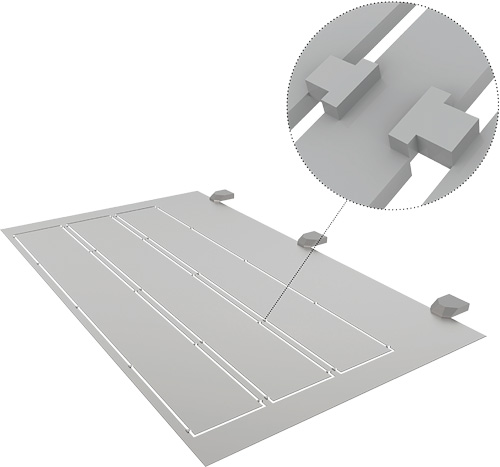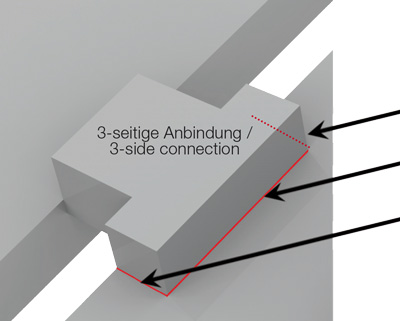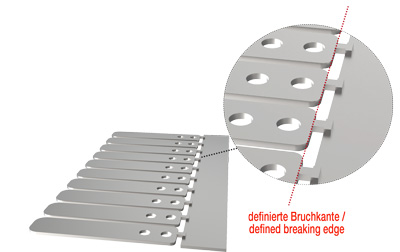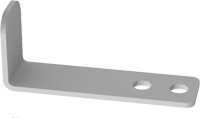PASS Information - ps:®macro-joint
For effective production with manual part extraction
All machine operators and programmers know the problem:
Producing long parts (e.g. 1700 mm) with a small width (e.g. 250 mm). In this case 3 parts can be produced nested on a sheet plate with fence production.
The first option would be using the micro-joint method. However, micro-joint edges are not accepted by customers as the burr edges can cause injuries.
Additionally, sometimes the parts are too big to fit down the „part shoot“ on the machine. Now the big question is: how is it possible to remove the parts manually from the machine without any burrs and without always interrupting the machine production time.
The solution is called: ps:®macro-joint

The tool ps:®macro-joint is used for connecting parts with a rest fence. The technology is similar to the patented ps:®knock-out by PASS whereas the quantity of the macro-joints are determined by the programmer.
The machine operator can remove the single parts directly on the machine table after the completed sheet plate was produced.
The connecting bridge of the ps:®macro-joint is encircled on the 3 sides of the rest fence. This ensures that the connecting bridge remains on the rest fence of the sheet when the parts are broken out.

The machine operator does not have to worry about that the connection bridges create burrs that can fall into the brush table and cause scratches on the proceeding processes.
After taking the completed sheet plate from the table the single parts can be removed individually.
An additional example for using ps:®macro-joint:
Complicated and difficult production procedures are often necessary when small parts with bends have to be produced.
The request for punching parts with bends will always be required. But sometimes it is not possible to produce these small parts as they can’t be removed through the „part shoot“ on the machine.
But now it‘s easy:
ps:®macro-joint is a practical alternative in order to bend several parts together in the requested angle. The single parts must be produced in its form in one row on the sheet.

As shown in the picture, a metal strip (carrier plate) was produced on a side with a connection bridge to the single part. You see that it is also important to use the 3-side macro-joint connection.
The bending on a press brake machine can be done as soon as the prefabricated sheet with the connected single part is produced. The sample shows 10 single parts that can be produced in one bending process.
The formed parts can now be loosened almost seamless from the small metal strip due to the predetermined breaking point.

The efficiency in bending will be increased due to this production optimization. It provides the opportunity to produce parts which can’t be produced “through the part shoot” from the machine.
Advantages:
- trouble-free production process
- no waste of the machine table by slugs
- optimizing of the production process
- timesaving
- solution-oriented


